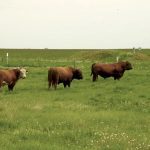Research indicates that internal parasite resistance to some dewormers is likely widespread, but there’s no simple solution. There are, however, approaches that can work, and some that likely won’t. Dr. John Gilleard, professor of parasitology at the University of Calgary, busts some myths about resistant parasites, explains how they evolve to become resistant and what […] Read more














